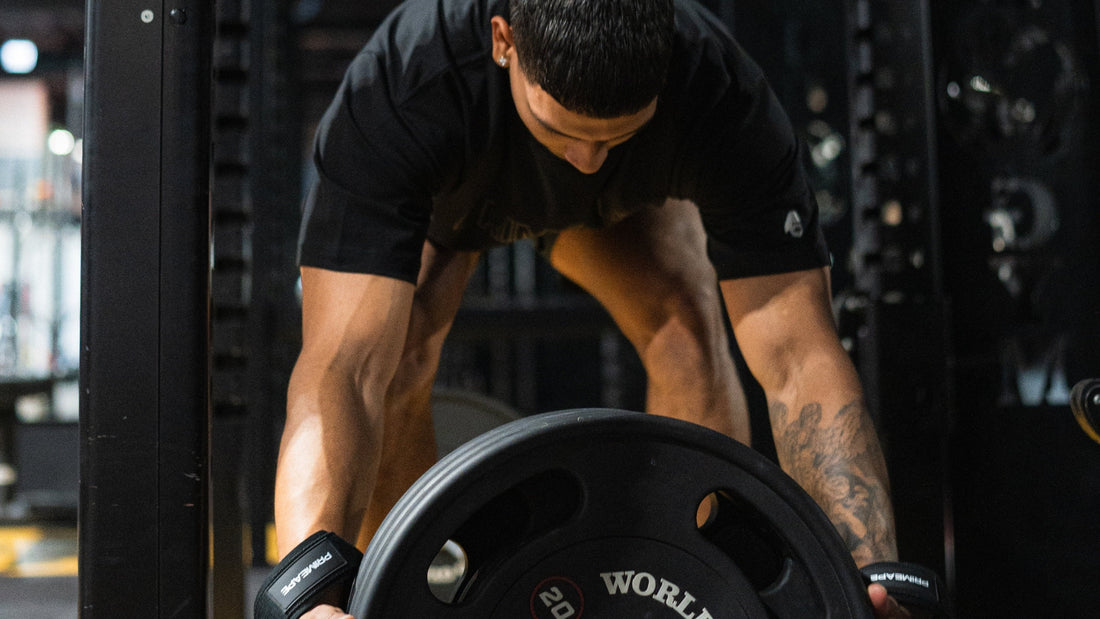
How to Improve Grip Strength for Lifting: Proven Exercises & Techniques
Share
Grip strength is one of the most overlooked yet crucial aspects of weightlifting. Whether deadlifting heavy weights, performing pull-ups, or carrying heavy objects, your grip is often the first thing to fail. A weak grip can limit your progress in strength training, reducing your ability to lift heavier or perform high-rep sets effectively.
The good news? Grip strength is trainable, just like any other muscle group. By incorporating the right exercises and techniques, you can significantly improve your grip, leading to better performance, reduced injury risk, and overall increased strength.
In this guide, we’ll explore why grip strength matters, the different types of grip, the best exercises for developing a stronger grip, common mistakes to avoid, and a structured 4-week workout plan to help you build an iron grip.
Best Exercises to Build Grip Strength
If you want to improve your grip strength, you need to target the muscles in your hands, wrists, and forearms with specific exercises. These movements will help you develop the strength and endurance needed to hold heavier weights for longer periods.
Farmer’s Carries
This exercise mimics real-life situations where you carry heavy objects. It builds forearm endurance and improves your support grip, making it easier to maintain a firm hold on weights during workouts.
-
Hold a heavy dumbbell or kettlebell in each hand.
-
Walk for 20-30 seconds while keeping your grip tight.
-
Repeat for 3-4 sets.
Why it works: Strengthens the support grip and improves forearm endurance.
Dead Hangs
Dead hangs are one of the simplest but most effective exercises for grip endurance. Hanging from a bar forces your hands and forearms to work hard to support your body weight.
-
Hang from a pull-up bar with an overhand grip.
-
Start with 15-30 seconds and gradually increase your time.
-
Perform 3-4 sets.
Why it works: Builds support grip and overall grip endurance.
Plate Pinches
Plate pinches are great for improving pinch grip strength, which helps in lifting and holding objects without slipping.
-
Hold two weight plates together using only your fingers and thumb.
-
Aim to hold the plates for 20-30 seconds per set.
-
Repeat for 3-4 sets.
Why it works: Strengthens pinch grip and improves grip endurance.
Towel Pull-Ups
Adding a towel to your pull-ups increases the difficulty by making the grip surface harder to hold onto. This forces your hands and wrists to work harder.
-
Drape a towel over a pull-up bar and grip it firmly.
-
Perform pull-ups while holding onto the towel instead of the bar.
-
Aim for 3-4 sets of 6-8 reps.
Why it works: Enhances crush grip and wrist strength.
Reverse Curls & Wrist Curls
Strengthening the forearms directly improves grip control and stability. Reverse curls and wrist curls are two essential movements for forearm and wrist development.
-
Use a barbell or dumbbells to perform wrist curls and reverse curls.
-
Perform 3-4 sets of 10-15 reps.
Why it works: Strengthens the wrist and forearm muscles for better grip control.
Incorporating these exercises into your regular training routine will significantly improve your grip strength over time.

Why Grip Strength Matters for Lifting
Grip strength plays a crucial role in both fitness and daily activities. In weightlifting, a strong grip enhances performance in exercises like deadlifts, rows, and kettlebell swings by allowing better control over the weight. It also helps prevent early fatigue, enabling you to complete more reps without your hands giving out first.
Beyond the gym, grip strength is essential for functional movements like carrying groceries or climbing. Additionally, a weak grip increases the risk of wrist injuries and poor lifting form. By focusing on grip training, you’ll not only improve your lifts but also build a stronger foundation for overall strength and endurance.
Types of Grip Strength
To build a stronger grip, it’s important to understand the different types of grip strength:
-
Crush Grip – The force used when squeezing something, like gripping a dumbbell or crushing a hand gripper.
-
Pinch Grip – The ability to hold objects between your fingers and thumb, like gripping weight plates.
-
Support Grip – The ability to hold onto something for extended periods, like hanging from a pull-up bar or holding a deadlift.
-
Wrist & Forearm Strength – Crucial for stabilising the grip during heavy lifts and preventing wrist injuries.
Each type of grip plays a role in different exercises, so training all aspects will lead to better results.
Essential Gym Accessories for Grip Strength
Using the right gym accessories can enhance your grip training and improve your performance. However, it's important to use them wisely to avoid dependency.
Lifting Straps
Lifting straps help you grip heavier weights by reducing hand fatigue, making them useful for exercises like deadlifts and rows. They allow you to focus on lifting without worrying about grip failure.
However, overusing them can prevent your natural grip strength from developing. To get the best results, use straps only when necessary and continue training your grip independently.
Chalk vs. Gloves
Chalk improves grip by absorbing sweat and moisture, giving you a more secure hold on weights and bars. Gloves, on the other hand, provide hand protection but can slightly reduce direct grip engagement.
While both have their uses, chalk is the better choice for maximising raw grip strength and preventing slipping during lifts.
Grip Strengtheners
Hand grippers and similar tools are excellent for building crush-grip strength. Regular use, even just a few minutes a day, can lead to noticeable improvements in hand and forearm endurance.
By incorporating grip strengtheners into your routine, you can develop stronger hands for better lifting performance.

Common Gripping Training Mistakes to Avoid
Many lifters make mistakes that slow down their grip strength progress. One of the most common mistakes is overusing lifting straps—while they help with heavier lifts, relying on them too much prevents natural grip development.
Another mistake is neglecting forearm training, as grip strength largely comes from the forearm muscles, and failing to train them directly can limit improvement.
Some lifters focus only on lifting heavy weights, but grip strength is about more than just max loads; endurance is just as important.
Lastly, inconsistent grip training is a major setback—just like any other muscle, grip needs to be trained regularly to see real progress. Avoiding these mistakes will help you build a stronger, more reliable grip over time.
A 4-Week Grip Strength Workout Plan
Improving grip strength requires consistency and progressive overload. This 4-week plan will help you build stronger hands and forearms by gradually increasing intensity and endurance. Start with foundational exercises in the first two weeks, then challenge your grip further in weeks three and four.
Week 1-2
During the first two weeks, focus on building a solid grip foundation with endurance-based exercises. These movements will strengthen your hands, wrists, and forearms while improving your ability to hold onto weights for longer periods.
-
Farmer’s Carries – 3 sets of 30 seconds
-
Dead Hangs – 3 sets of 20-30 seconds
-
Reverse Curls – 3 sets of 12 reps
-
Plate Pinches – 3 sets of 20 seconds
Week 3-4
In the final two weeks, increase the challenge by extending exercise durations and adding towel pull-ups to further test your grip strength. These adjustments will help develop a stronger crush grip, endurance, and forearm stability.
-
Increase Farmer’s Carry time to 40 seconds
-
Dead Hangs – 3 sets of 30-40 seconds
-
Add Towel Pull-Ups – 3 sets of 6-8 reps
- Increase Reverse Curls to 15 reps per set
Build a Stronger Grip—Lift Heavier, Last Longer, and Perform Better
Improving your grip strength is essential for lifting heavier weights, preventing injuries, and increasing overall athletic performance. By incorporating specific grip-strengthening exercises, using the right accessories wisely, and avoiding common training mistakes, you can develop an unbreakable grip.
Remember, consistency is key. Stick to a structured plan, challenge your grip regularly, and over time, you’ll notice massive improvements in your strength and endurance. Start implementing these exercises today, and watch your lifts (and grip) get stronger than ever!
